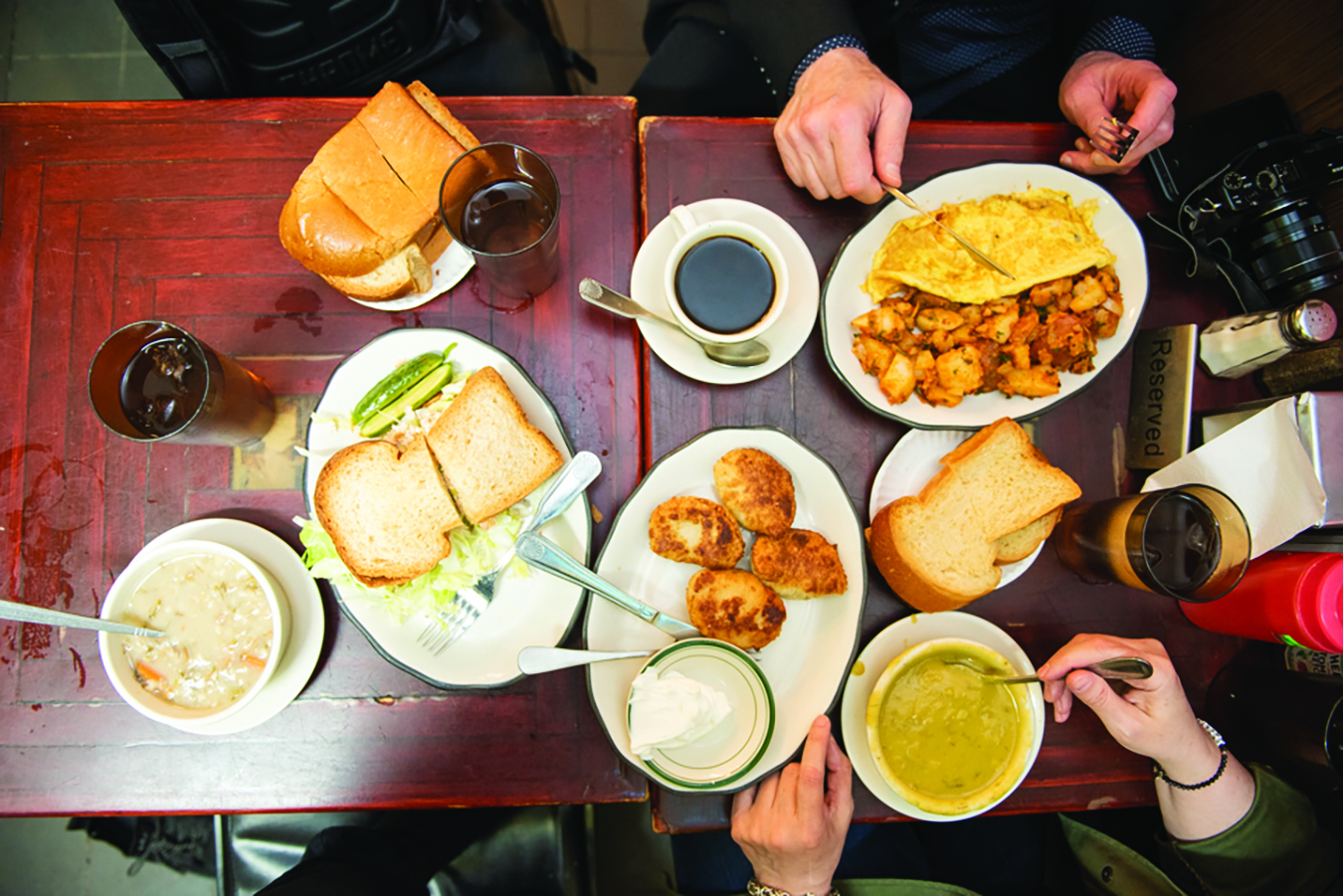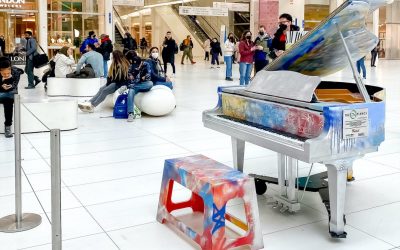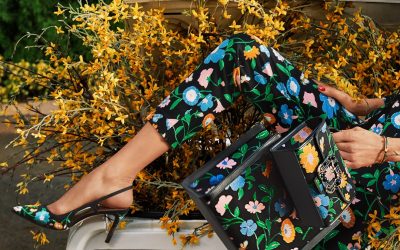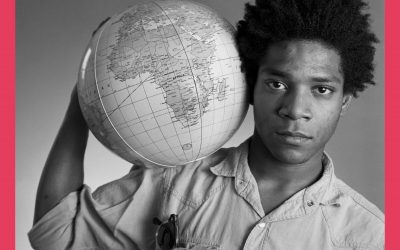by Deborah L. Martin photography by Bochun Cheng
ST. MARK’S PLACE HAS GHOSTS. It has a vibe. It has changed, but this is New York, change is what we do. Every generation believes it was better “back in the day,” but one thing remains true. You might have to search a little harder for that East Village cool, but it’s here if you pay attention.

St. Mark’s was the home place for the Beats in the 50’s, the hippies in the 60’s, and the punks in the 70’s and 80’s. In the 90’s the anarchists took over, and today the street—and the neighborhood—is in transition. It’s definitely more luxurious than when the New York Dolls posed in front of Gem Spa, but the history remains.
Like many New York locations, the story of St. Mark’s begins in the 1600’s, on tranquil farmland owned by one of New York’s first families, the Stuyvesants. It has a Hamilton connection too— Al Junior purchased the townhouse at 4 St. Mark’s Place in 1833, and he lived there with his family and his penniless mother for 10 years. It sold in 2016 for $10 million, but for years it housed Trash and Vaudeville, the first purveyor of Dr. Martens in this country.
Street photographer David Godlis has seen the neighborhood change in the 30 years he has lived on St. Mark’s. We wandered the street together, shooting, talking, and looking for that East Village magic. “The street is always there,” he says. “No matter what the storefront is, it’s the same street where Dylan walked, where Kerouac walked, where the Dolls walked, and where we are walking, right now.” DT

ON THE STREET Godlis made some of the most iconic images in music history when he trained his lens on the stage at CBGBs, but he has also documented New York’s street life, especially on downtown streets like St. Mark’s Place, where he has lived for over 30 years. 
CHANGING TIMES Godlis shares a love for his neighborhood with fellow residents like Lenny Kaye of Patti Smith Band-fame and fellow punk-photographer Roberta Bayley. “Everything was happening here. For a street photographer, this was the place.”

GRAND HOTEL The St. Mark’s Hotel, formerly the Valencia, housed the Five Spot on the ground floor, where jazz great Thelonious Monk started his career. 
JUNIOR’S PLACE Alexander Hamilton Jr. lived in this 1833 row house, which later became the home of the legendary punk shop Trash & Vaudeville. 
LASTING MEMORIES Though the street has welcomed many new eateries in recent years, some of the old favorites—like Khyber Pass—remain 
J-BEAUTY Japanese lifestyle and beauty store Shibuyala opened its first New York store on St. Mark’s this year.

THEATRE PEOPLE Theatre 80 was once a speakeasy owned by gangster Walter Schieb, where people like Thelonious Monk, John Coltrane, and Frank Sinatra performed. In the 70’s it became a revival movie theater—Billy Crystal once served as an usher—and it now hosts a combination of live performance and film. 
SEARCHING FOR ST. MARK’S Search and Destroy is a punk clothing emporium that has survived the “gentrification” of St. Mark’s. Next door, 19 St. Mark’s was home to Andy Warhol’s Exploding Plastic Inevitable, featuring the house band, The Velvet Underground, with members Lou Reed and John Cale, among others.

BARFLY Holiday Cocktail Lounge has been around since 1965, and was a hangout for poets and intellectuals such as neighborhood residents W.H. Auden and Leon Trotsky 
POETIC W.H. Auden lived in an apartment at number 77. He had no running water so he reportedly used the facilities at the Holiday, next door. 
STROLL “I loved this street because it really felt like a boulevard. The buildings are set back so the sidewalks are wide,” says Godlis. “it felt so open.” 
SHARING IDEAS Another street photographer shares his work— printed on priority mail labels—with Godlis.

ALT LIFE St. Mark’s has long been known for its “anything goes” attitude. In its heyday, the street was once lined with tattoo and piercing parlors, although few remain today. 
ROW HOUSES In the early 1800’s the street was lined with terracotta and brick row houses, occupied by some of New York’s wealthiest residents. Later the area was home to an influx of immigrants including Germans and Eastern European Jews. The neighborhood still has some vestiges of those earlier residents.

LE JAZZ HOT Jules Bistro has been a St. Mark’s fixture for 25 years, serving up the classics like pommes frites and escargot, to the tune of nightly live jazz. 
CLUB KIDS Club 57 was a hangout and performance space for the likes of Cyndi Lauper, Keith Haring, Klaus Nomi, Fab Five Freddie, Rupaul, Madonna, and countless others. 
ALCATRAZ On the corner of Avenue A and St. Mark’s, punk dive bar Alcatraz is now chef Alex Stupak’s tequila bar and tortelleria, Empellón al Pastor. 
GET PHYSICAL The tenement buildings at 96-98 St. Mark’s were famously featured on Led Zeppelins’ Physical Grafitti album
in 1975.

NO EGGS NO CREAM Allen Ginsberg, Abbie Hoffman, Madonna, The New York Dolls, Jack Kerouac, The Ramones, Patti Smith, William S. Bouroughs—have all darkened the door of the most famous newsstand in New York history. Get an egg cream and a newspaper, and bask in the knowledge that you are keeping that history alive for future generations. 
OF BOOKS AND SOCKS The Sock Man, a St. Mark’s institution, moved from his original location at number 27 when the landlord tripled the rent. He is now located further down the street. His neighbor, East Village Books, a secondhand book shop that also carries some records, has been in the neighborhood since 1994.

TENEMENT LIFE In the 1900’s the 4- and 6-storey tenements were built to house immigrants, replacing many of the row houses of the previous century 
JAVA STOP Three generations of the Longo family have owned Porto Rico Importing since 1958. They sell 130 varieties of coffee beans from 28 countries. 
TATTS Pioneering tattoo artist John Shaw—son of jazz great Artie Shaw—started tattooing in a Bowery basement in the 70’s and opened Fun City in 1976. 
ON THE STREET Cafe Mogador opened in 1983, and is a popular local favorite, serving up Moroccan and Israeli dishes and a classic East Village, bohemian vibe. 
SEARCHING FOR ST. MARK’S Search and Destroy is a punk clothing emporium that has survived the “gentrification” of St. Mark’s. Next door, 19 St. Mark’s was home to Andy Warhol’s Exploding Plastic Inevitable, featuring the house band, The Velvet Underground, with members Lou Reed and John Cale, among others.

RIOTOUS LIVING The protest phrase, “Die Yuppie Scum” originated during the 1988 riots in Tompkins Square Park, at the eastern terminus of St. Mark’s Place.
NIGHT OWL Street photographer David Godlis was born in New York City in 1951, and he picked up his first camera, a Pentax Spotmatic, in 1970. He has been shooting photographs ever since. He moved back to the city with his Leica in 1976, landing on St. Mark’s Place. He stumbled into the burgeoning punk scene at CBGBs, where he photographed legendary bands such as Blondie, Patti Smith Band, The Ramones, the Talking Heads, and Television. His photographs, collected in his book, History is Made at Night, capture the emergence of the punk rock scene in the East Village and the Lower East Side of New York City. Godlis says, “I was up in Boston at school, and taking pictures, and I wondered why they weren’t as good as Garry Winogrand’s photos and then I realized, it was because I wasn’t in New York.” He continues, “New York is designed for photography. If you stand on a street corner you can take a horizontal shot of the people walking towards you and it’s a great shot. Or you can take a vertical shot and get the buildings in—also a great shot. Winogrand used to say, ‘just pay attention to the four corners of your frame. If you can’t see it, it isn’t in the shot.’” Godlis’s book and photographs are available through his website, godlis.com, and at I Need More, 75A Orchard Street, NYC. DT















